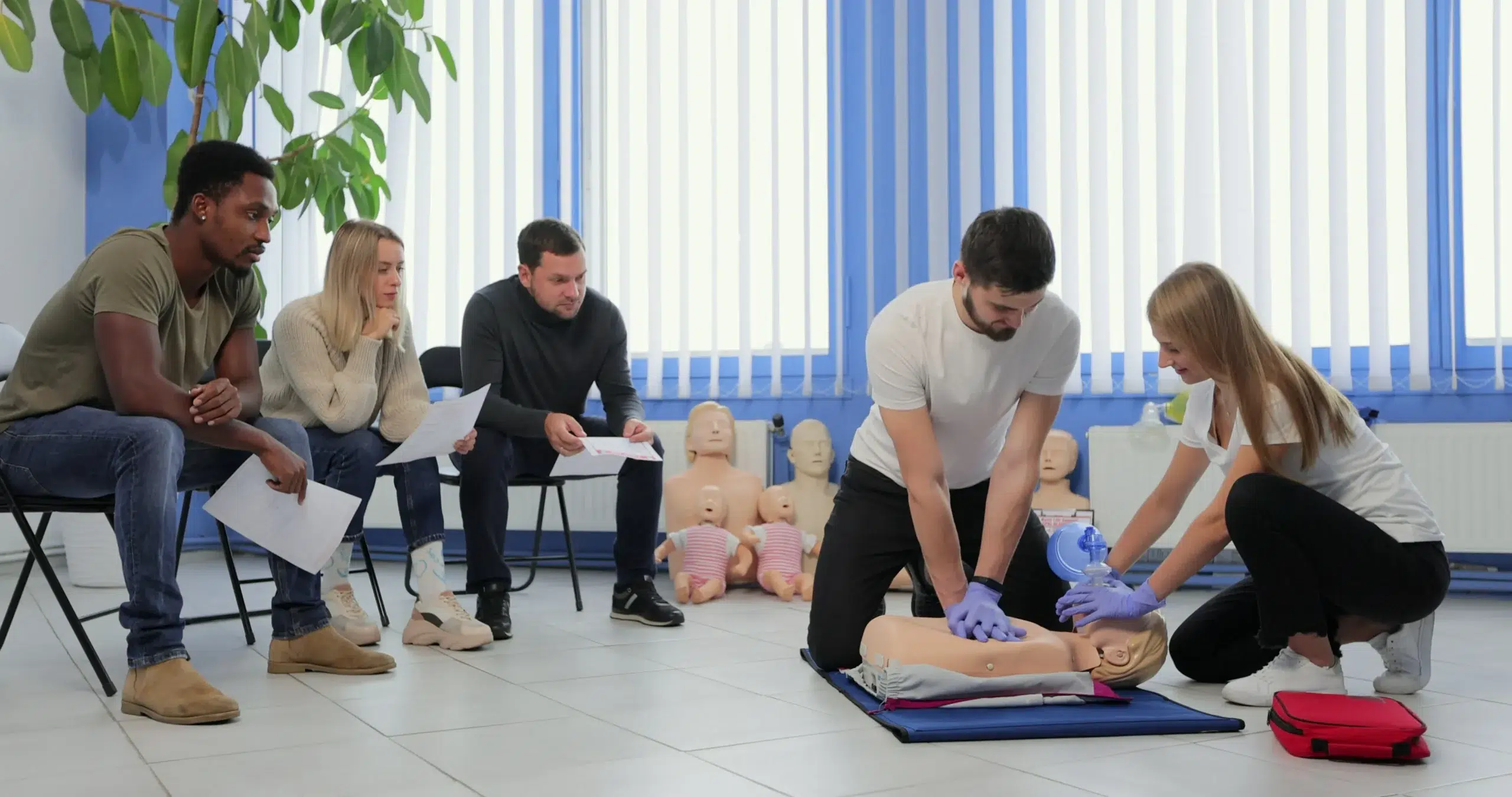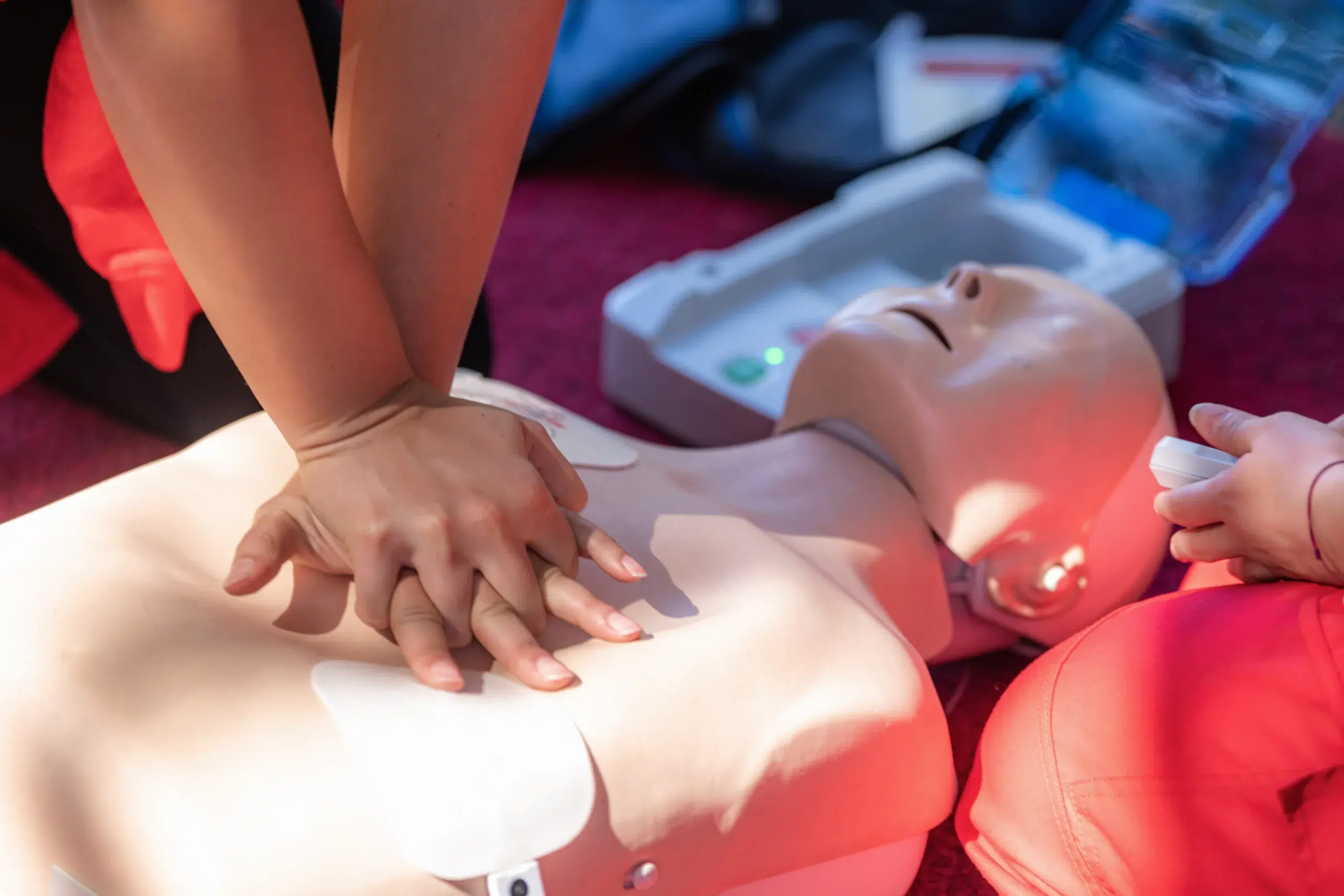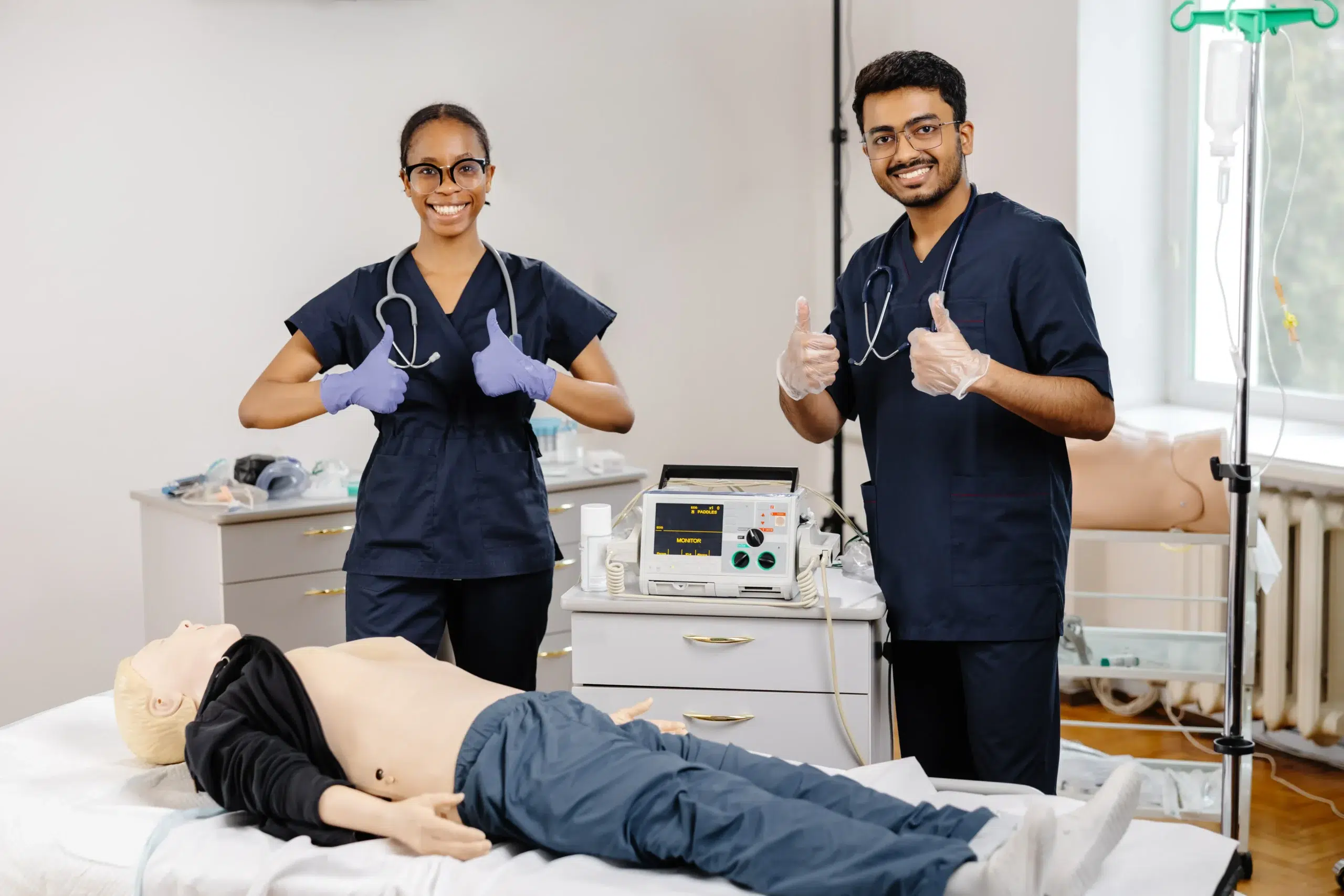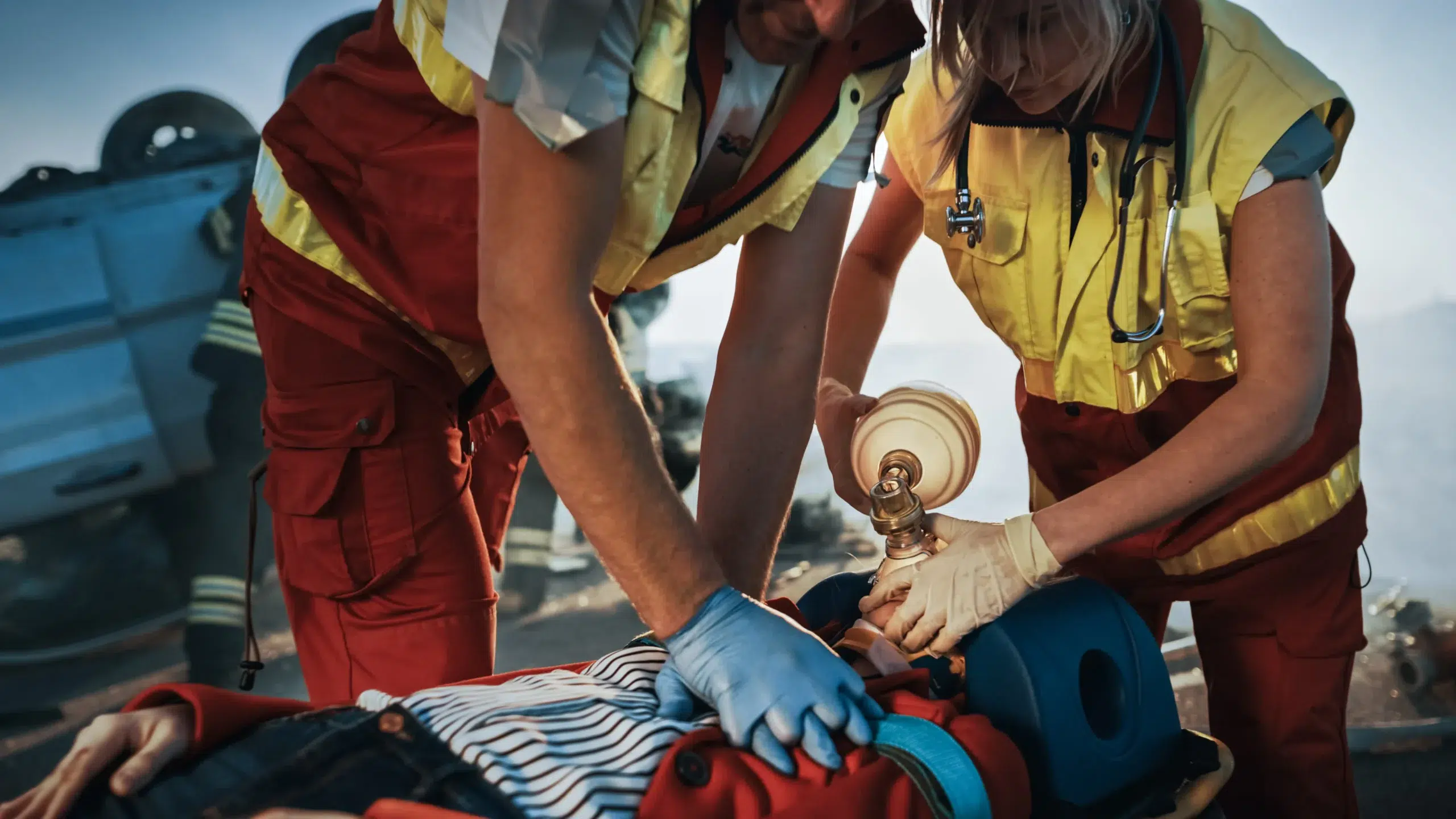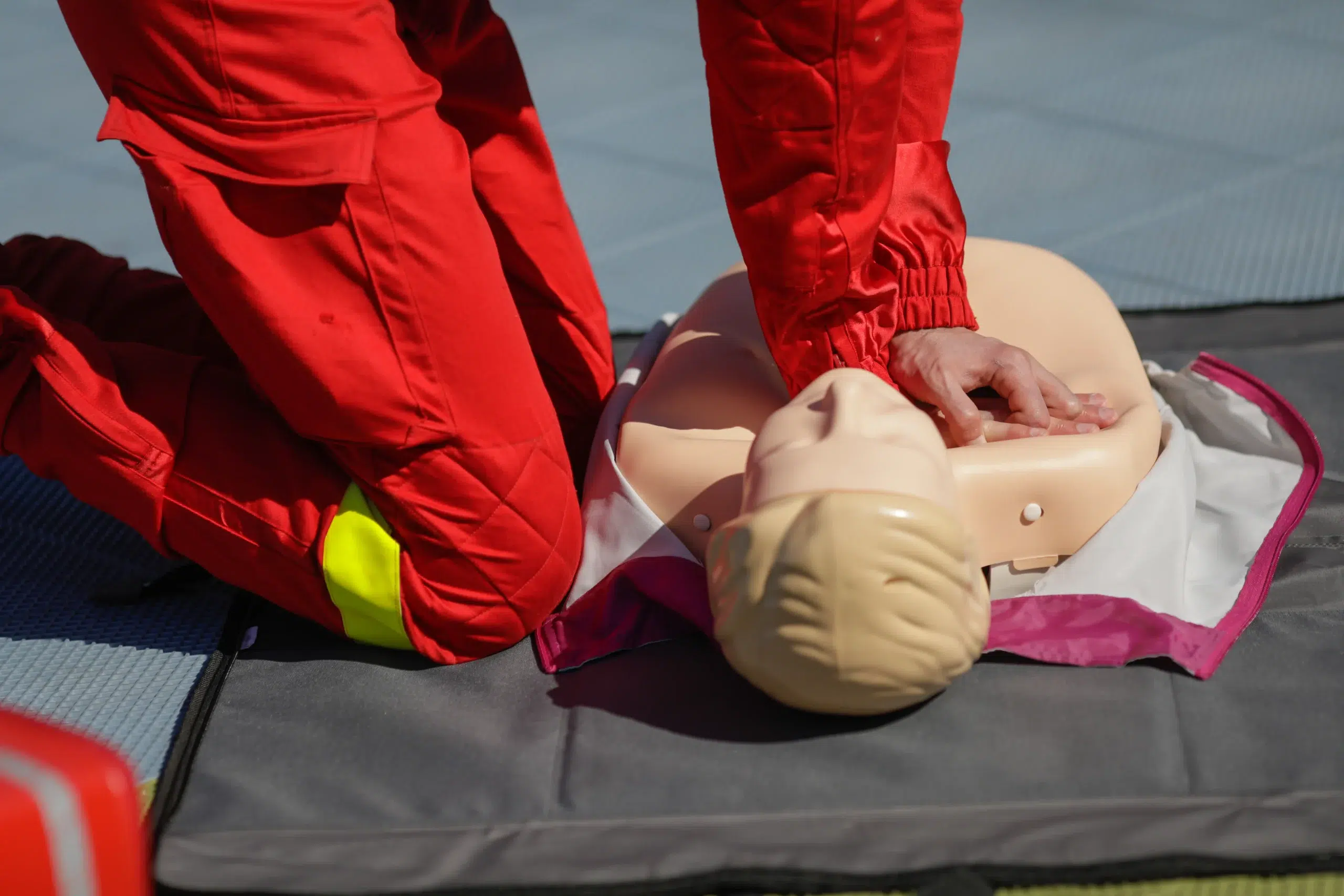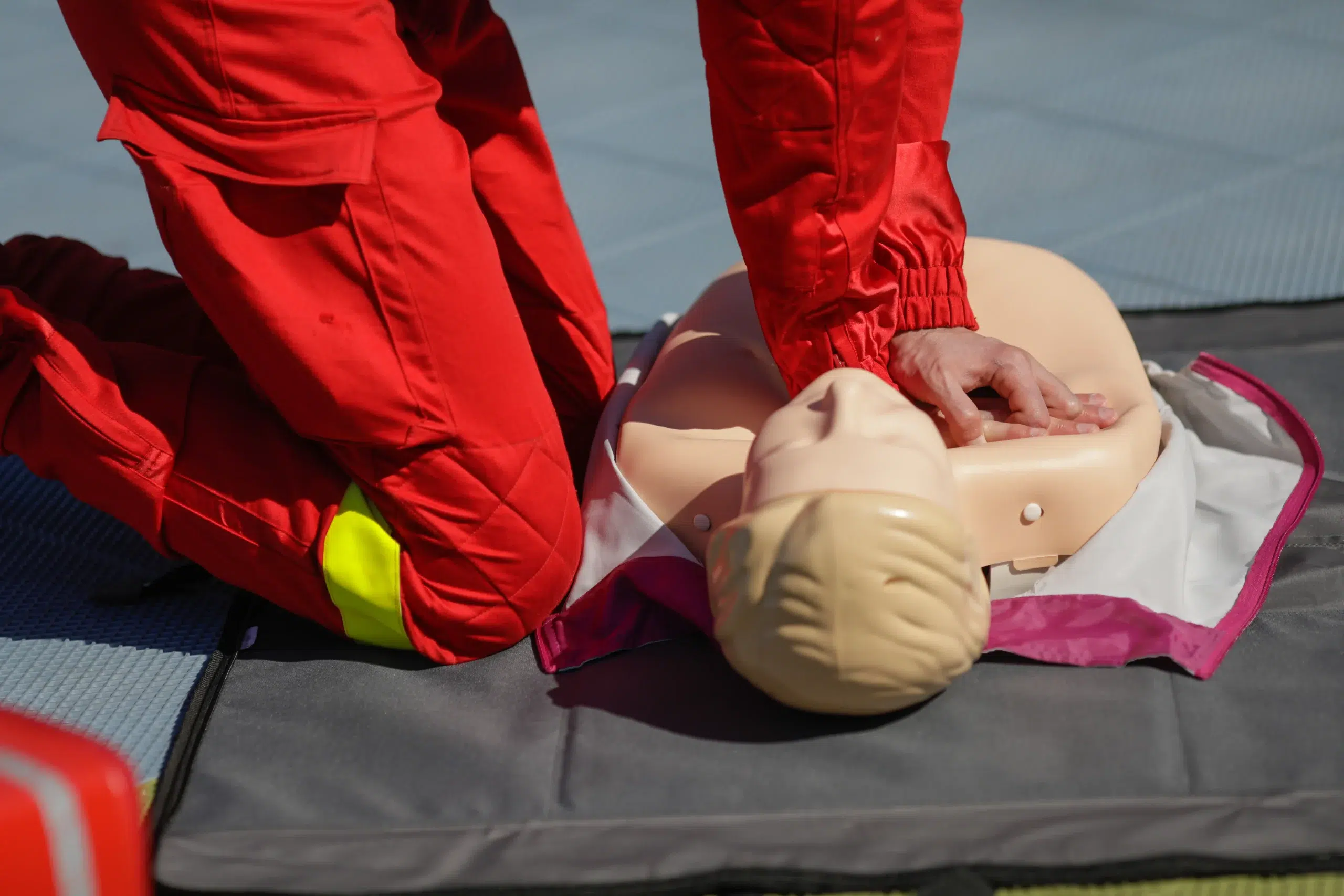San Jose, a city known for its dynamism and diversity, presents a unique set of challenges and opportunities when it comes to emergency preparedness. With its blend of urban and suburban environments, the need for accessible and comprehensive first-aid in San Jose is more important than ever. This article will delve into the various aspects of first-aid training in San Jose, from finding affordable courses to understanding the benefits of certification, empowering you to become a more confident and capable first responder.
Key Takeaways
- First aid skills empower you to help: Equipping yourself with first aid knowledge builds confidence and prepares you to assist others during emergencies, from minor injuries to life-threatening situations.
- Flexible training options fit your lifestyle: Explore the variety of first aid and CPR courses available in San Jose, including in-person, blended learning, and online options to match your schedule and learning style.
- Certification provides valuable benefits: A first aid certification enhances your resume, can fulfill workplace requirements, and demonstrates your commitment to safety, potentially opening up new opportunities.
What is First Aid and Why is it Important in San Jose?
First aid is the immediate assistance given to someone experiencing a sudden injury or illness. It involves a series of simple, often life-saving, techniques that anyone can learn, regardless of medical background. These skills help stabilize a person until professional medical help arrives. Understanding and being able to perform first aid is essential everywhere, but especially in a busy city like San Jose, where emergencies can happen anytime, anywhere—at home, work, or out in public.
Why is first aid so important? Because emergencies don’t wait. Knowing how to respond effectively can dramatically improve outcomes. The American Red Cross emphasizes the importance of recognizing when someone needs help and taking swift action. Check out their website for more information on first aid. In a dynamic environment like San Jose, a quick response can truly be the difference between life and death.
First aid training gives you practical skills you can use in everyday life. These courses are generally short, sometimes just a few hours, but they pack in essential, potentially life-saving information. The skills you gain can help you confidently handle a wide range of situations, from minor cuts and burns to more serious incidents. Plus, having first aid and CPR certifications on your resume shows initiative and a commitment to safety—a valuable asset in San Jose’s competitive job market. Consider taking a CPR and First Aid course to enhance your resume and learn valuable skills. It can give you an edge, demonstrating your preparedness and ability to contribute to a safer environment for everyone.
Find the Right First Aid Training
Finding the right first aid training involves understanding your options and choosing a course that fits your needs and schedule. Whether you’re a healthcare professional, a childcare provider, or simply someone who wants to be prepared for emergencies, San Jose offers a variety of first aid training programs.
What Classes are Available?
Organizations like the American Red Cross offer comprehensive first aid courses in San Jose, covering essential skills for handling medical emergencies. These courses equip you with the knowledge and confidence to respond effectively in various situations, from minor injuries to more serious incidents. You’ll learn techniques for assessing injuries, controlling bleeding, managing shock, and providing initial care until professional help arrives. Many courses also include CPR and AED training. Safety Training Seminars also offers a range of CPR and First Aid courses in San Jose.
Learn In-Person, Online, or Both
One of the advantages of first aid training today is the flexibility in learning formats. You can opt for traditional in-person classes, which provide hands-on practice and direct interaction with instructors. Alternatively, if your schedule is tight, consider blended learning. This approach combines online coursework with in-person skills sessions, allowing you to learn the theoretical material at your own pace and then demonstrate your practical skills in a supervised setting. The American Heart Association also offers blended learning for their CPR courses.
Find a Schedule That Works for You
With various training providers and formats available, finding a schedule that accommodates your needs is easier than ever. Weekend classes, evening sessions, and online modules provide flexibility for busy professionals, parents, and students. Look for courses offered at different times and locations throughout San Jose, Santa Clara, and Sunnyvale. Check with providers like Safety Training Seminars for their course schedules to find the best fit for your calendar. Many providers also offer private group classes, a convenient option for workplaces or community organizations. Consider exploring Safety Training Seminars’ low price guarantee to ensure you’re getting a good value.
Learn Essential Skills, Get Certified
First aid and CPR training equips you with practical skills to handle a range of medical emergencies. From everyday mishaps to life-threatening situations, these certifications empower you to respond effectively and potentially save lives. Let’s explore some key skills you’ll gain through Safety Training Seminars.
CPR and AED Training
CPR (Cardiopulmonary Resuscitation) is a critical life-saving technique used when someone’s breathing or heartbeat has stopped. You’ll learn how to perform chest compressions and rescue breaths, restoring blood circulation and oxygen flow. CPR training often includes AED (Automated External Defibrillator) instruction. AEDs are portable devices that can help restore a normal heart rhythm. This combined knowledge makes you a vital link in the chain of survival.
Wound Care and Bandaging
Proper wound care is essential to prevent infection and promote healing. You’ll learn how to clean and dress different types of wounds, applying appropriate bandages and dressings. This training covers how to control bleeding and recognize signs of infection, ensuring you can provide immediate care and minimize complications.
Choking Response and the Heimlich Maneuver
Choking can be a terrifying experience, but knowing how to respond can make all the difference. First aid training teaches you how to recognize the signs of choking and perform the Heimlich maneuver. This technique uses abdominal thrusts to dislodge an obstruction from the airway, allowing the person to breathe again.
Handle Common Emergencies
Beyond CPR and choking, first aid training prepares you for a variety of other emergencies. You’ll learn how to respond to burns, allergic reactions, seizures, and other sudden illnesses. Understanding how to assess a situation, provide basic care, and when to call 911 can significantly impact the outcome. The American Red Cross offers comprehensive resources on handling various emergencies.
Get Certified and Stay Certified
Earning your first aid and CPR certification demonstrates your commitment to safety and preparedness. These certifications are typically valid for two years, after which you’ll need to recertify to stay current with the latest guidelines and techniques. Regular renewal ensures your skills remain sharp and you can confidently respond to any emergency. Consider registering for a CPR class to get started or renew your existing certification.
Top First Aid Training Providers in San Jose
Finding the right first aid training provider is an important first step. Here are some reputable options in San Jose:
Safety Training Seminars
Safety Training Seminars offers a variety of first aid and CPR training courses designed for both individuals and organizations. They focus on practical skills and knowledge to help you respond effectively in emergencies.
American Red Cross
The American Red Cross provides comprehensive first aid training in San Jose, including in-person and blended online/in-person options. These courses lead to a two-year certification, and in-person classes offer hands-on learning and personalized instruction.
American Heart Association
The Emergency and Health Training Center offers a range of American Heart Association certifications, including CPR, BLS, ACLS, PALS, and First Aid. They serve San Jose and the broader Bay Area, with on-site training options available.
Health & Safety Institute (HSI)
HSI provides a variety of first aid and CPR training programs for individuals and workplaces. Their courses emphasize practical skills and meet national standards.
San Jose Fire Department
Many local fire departments, like the San Jose Fire Department, offer CPR and first aid training to residents. Contact the San Jose Fire Department directly for information on current class availability and schedules, as these can vary. For additional options, explore resources like ProCPR, which often collaborates with fire departments on training programs.
Benefits of First Aid Certification
Getting certified in first aid offers several valuable benefits, both personally and professionally. It empowers you to handle emergencies effectively and can even open doors to new opportunities.
Be Prepared for Emergencies
Life is unpredictable. Accidents and medical emergencies can happen anytime, anywhere. First aid training equips you with the skills to respond swiftly and confidently in such situations. Knowing how to assess a situation, control bleeding, and perform CPR can make a crucial difference while waiting for professional medical help. The Red Cross defines first aid as the immediate help given to someone who is injured or suddenly becomes ill, and emphasizes that this knowledge can help you save a life.
Advance Your Career
A first aid certification is a valuable asset to your resume. It demonstrates your initiative, responsibility, and commitment to safety. Many employers, especially in healthcare, education, and childcare, prefer or require candidates to have first aid and CPR certifications. Safety Training Seminars offers a variety of CPR courses to help you gain this valuable credential. Having these credentials can give you a competitive edge in the job market and may even lead to promotions or higher pay.
Meet Workplace Safety Requirements
Many workplaces require a certain number of employees to be certified in first aid and CPR to comply with Occupational Safety and Health Administration (OSHA) regulations. Getting certified can help your company meet these requirements and create a safer work environment. Safety Training Seminars offers courses that meet OSHA standards. Check our CPR and First Aid course schedule to find a class that fits your needs. It’s important to note that online-only courses may not meet all workplace requirements, so check with your employer or OSHA for specific guidelines.
Gain Confidence in Emergency Situations
Knowing you can handle a medical emergency brings a sense of calm and confidence. First aid training not only teaches you practical skills but also helps you develop problem-solving abilities and the composure to remain calm under pressure. This confidence can empower you to take charge in an emergency and provide effective assistance until professional help arrives. Even basic first aid knowledge can make a huge difference, and quick action can significantly improve outcomes for an injured person. The Red Cross offers more information on the importance of first aid and how it can empower individuals in emergency situations.
Affordable and Accessible First Aid Training
Getting trained in first aid shouldn’t break the bank. Thankfully, there are several ways to find affordable and accessible training options in San Jose.
Find Promotions and Discounts
Many organizations, like the American Red Cross, offer promotions and discounts on first aid courses. Check their websites or subscribe to their newsletters to stay updated on special offers. You might find discounts for students, seniors, or groups, making training more budget-friendly and freeing up funds for additional resources like first aid manuals or kits.
Get Group Rates
If you’re training a group of people, such as colleagues or a community organization, ask about group rates. Many training providers, including Safety Training Seminars, offer discounted prices for group bookings. This is a cost-effective way to ensure everyone receives the necessary training, and learning together can create a more engaging experience.
Flexible Scheduling
It can be tough to fit in extra training around a busy schedule. Look for providers that offer flexible options, such as weekend or evening classes. Some courses use blended learning formats that combine online modules with in-person skills sessions. Safety Training Seminars offers a variety of scheduling options to fit busy lifestyles.
Low Price Guarantees
Some training centers offer a low price guarantee, giving you confidence that you’re getting the best value. Safety Training Seminars offers this guarantee, so you can invest wisely in your first aid education. Knowing you’re getting a good deal can make choosing the right course less stressful.
Choose the Right First Aid Course
Finding the right first aid course is crucial for effective emergency preparedness. Consider these factors to ensure your training aligns with your specific needs and circumstances.
Define Your Needs and Goals
Before searching for courses, ask yourself why you want first aid training. Are you looking to gain essential life skills? Do you need certification for your job or to volunteer? Understanding your goals will help you choose the right course. As the Red Cross explains, first aid is the immediate help given to someone who is injured or suddenly becomes ill. Knowing first aid can help you save a life while waiting for professional medical help.
Compare Courses
Once you know your goals, compare courses. Look at what each course covers. Some focus on basic first aid, while others include CPR and AED training. Consider the format. The Red Cross offers in-person classes, online courses, and blended learning. Keep in mind that online-only classes may not meet all workplace requirements, so check with your employer. Safety Training Seminars offers American Heart Association-certified courses, which are widely recognized.
Consider Your Time and Budget
First aid courses vary in length and cost. Think about how much time you can commit. Some courses can be completed in a single day, while others require multiple sessions. Also, factor in the cost and any materials you might need. The Red Cross points out that the training is relatively short, just a few hours, but teaches valuable, life-saving skills. Safety Training Seminars offers a low price guarantee, ensuring quality training at a competitive price.
Check Provider Reputation and Credentials
Finally, research the training provider. Look for providers with a strong reputation and experienced instructors. Check if they are certified by a reputable organization like the American Heart Association or the Red Cross. All Red Cross courses are reviewed by medical and scientific experts. Safety Training Seminars has a dedicated team of customer service representatives to support students throughout their training. Choosing a reputable provider ensures you receive high-quality training that meets industry standards.
Related Articles
- CPR & First Aid Training in San Jose: Your Guide – San Jose CPR Classes
- Protect Your Workplace with CPR & First-Aid Training
- Pediatric CPR & First Aid Classes in San Jose – San Jose CPR Classes
- Why CPR Is Crucial in Healthcare
- San Jose CPR Certification: Your Complete Guide – San Jose CPR Classes
Frequently Asked Questions
What’s the difference between first aid and CPR? First aid addresses a wider range of injuries and illnesses, from minor cuts to more serious conditions like seizures. CPR specifically focuses on restoring breathing and circulation when someone’s heart has stopped. Think of CPR as one specific, vital skill within the broader scope of first aid.
How do I choose the right first aid course in San Jose? Think about why you need the training. Is it for your job, personal knowledge, or something else? Once you know your goals, compare what different courses offer. Some cover just the basics, while others include CPR and AED training. Also, consider your schedule and budget. Finally, check the training provider’s reputation and make sure they’re certified by a recognized organization.
How long does a first aid certification last, and how do I renew it? Most first aid certifications are valid for two years. You’ll need to take a recertification course to keep your skills current and your certification valid. Check with your certifying organization or training provider for specific renewal requirements and available courses.
What if I can’t afford first aid training? Look for organizations that offer discounts, like student or group rates. Some training centers also have low-price guarantees. It’s worth checking with different providers to compare costs and find the best fit for your budget.
Is online first aid training enough, or do I need in-person training? While online training is convenient for learning the basics, in-person training is essential for practicing hands-on skills like CPR and bandaging. Many workplaces also require in-person training for certification. Blended learning, which combines online and in-person components, can be a good option.



